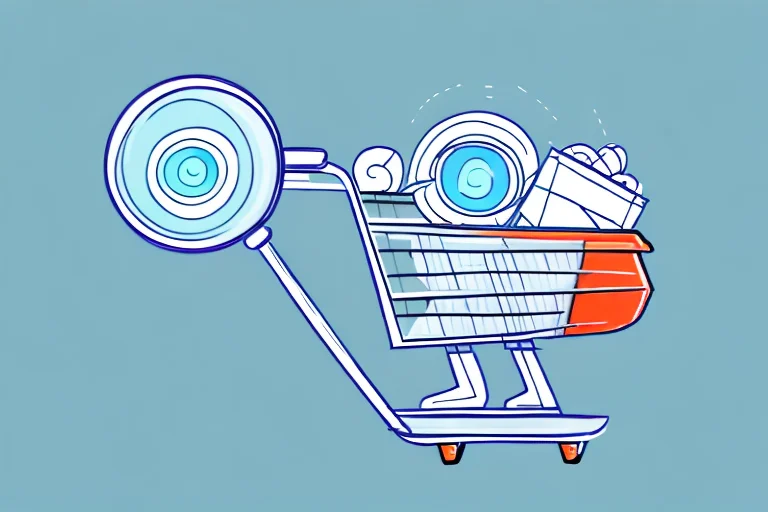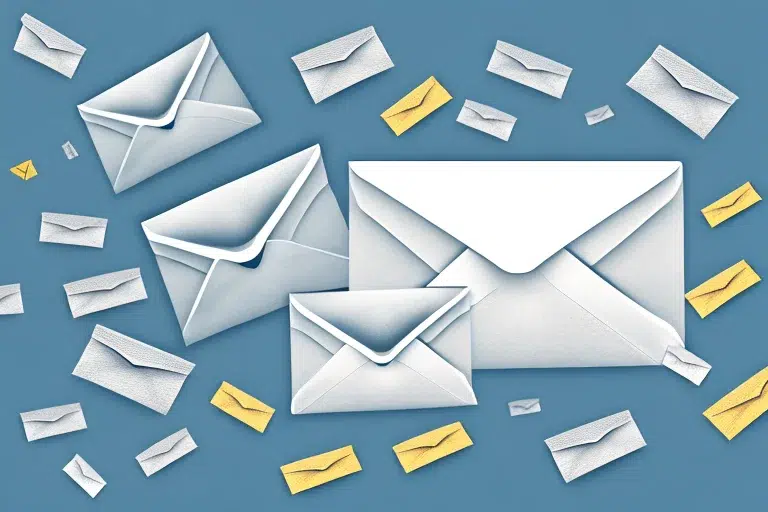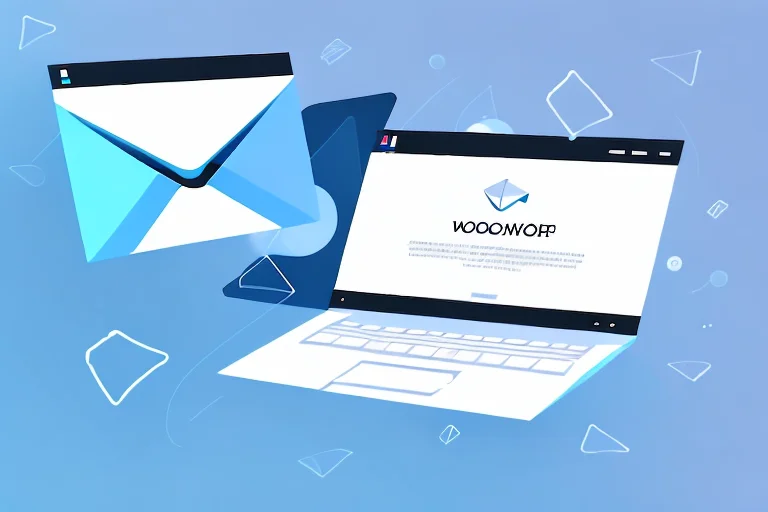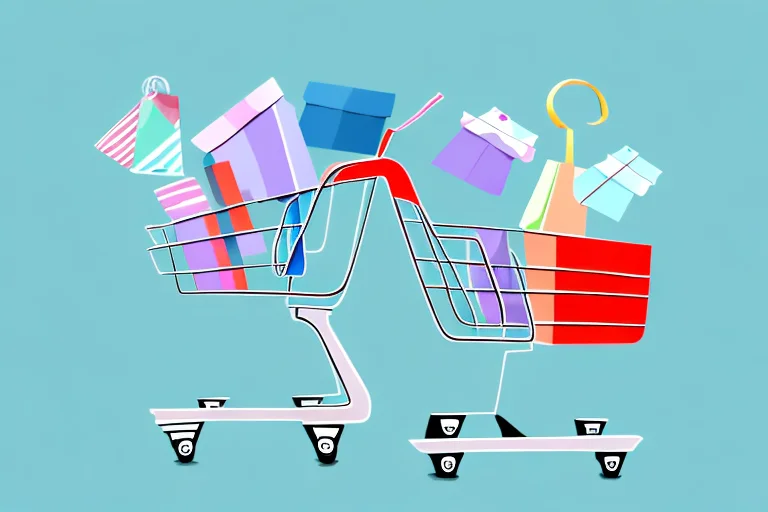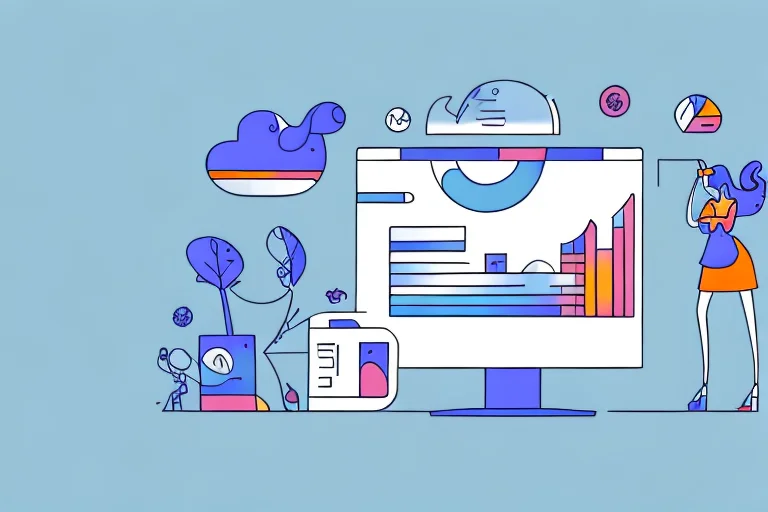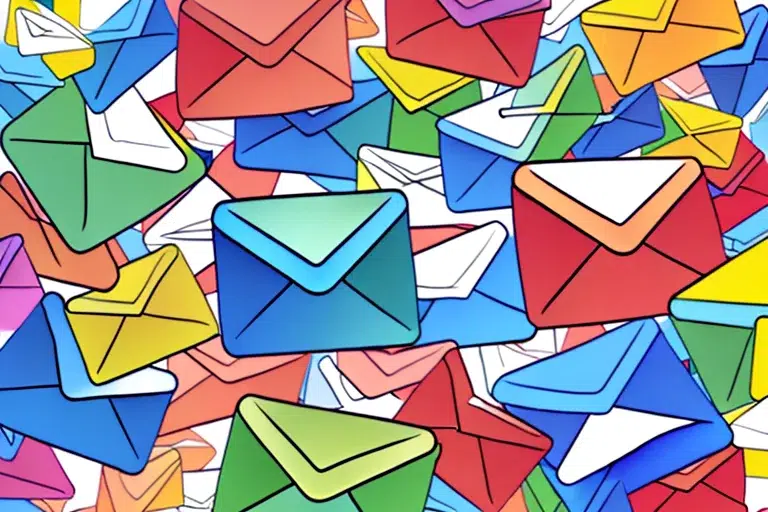In today’s digital age, email marketing has become a powerful tool for businesses to reach out to their customers and drive sales. For Shopify store owners, email marketing is an essential strategy to maximize return on investment (ROI) and build a loyal customer base. In this article, we will explore the fundamentals of Shopify email marketing, strategies to optimize ROI, analyzing campaign success, advanced techniques, and case studies of successful campaigns.
Understanding the Basics of Shopify Email Marketing
Shopify email marketing refers to the practice of using email to communicate and engage with your customers, promoting products, and nurturing relationships. With an email marketing strategy in place, Shopify store owners can send targeted messages to different segments of their customer base, ensuring personalized communication that drives customer engagement and sales.
Email marketing has become an essential tool for businesses of all sizes, and for good reason. It offers a cost-effective way to reach a large audience and has a high return on investment. By leveraging email marketing, Shopify store owners can effectively promote their products, build brand loyalty, and drive sales.
One of the key advantages of email marketing is its ability to deliver personalized content. With the right tools and strategies, store owners can segment their customer base and send tailored messages based on customers’ preferences, purchase history, and behavior. This level of personalization helps to create a more engaging and relevant experience for customers, increasing the chances of conversion and repeat purchases.
Why is Email Marketing Important for Your Shopify Store?
Email marketing is important for your Shopify store because it allows you to connect with your customers on a more personal level. Unlike social media or other advertising channels where your message can get lost in the noise, email provides a direct line of communication to your customers’ inbox.
Furthermore, email marketing allows you to build a long-term relationship with your customers by delivering timely and relevant content that keeps them engaged and encourages repeat purchases. By sending regular newsletters, product updates, and exclusive offers, you can stay top of mind with your customers and drive them back to your store.
In addition to building relationships, email marketing is a powerful tool for driving sales. According to research, email marketing has a higher conversion rate compared to other marketing channels. By sending targeted emails that showcase your products, offer discounts, or provide personalized recommendations, you can effectively drive traffic to your store and increase sales.
Another benefit of email marketing for Shopify stores is its ability to track and measure results. With the right email marketing platform, you can easily track metrics such as open rates, click-through rates, and conversion rates. This data provides valuable insights into the effectiveness of your campaigns, allowing you to make data-driven decisions and optimize your email marketing strategy for better results.
Overall, email marketing is a valuable tool for any Shopify store owner looking to grow their business. By leveraging the power of email, you can connect with your customers on a personal level, build relationships, and drive sales. With the right strategy and tools in place, email marketing can be a game-changer for your Shopify store.
Strategies to Maximize ROI Through Shopify Email Marketing
Building a Quality Email List
Before you can start reaping the benefits of Shopify email marketing, you need to build a quality email list. One way to do this is by offering incentives for visitors to sign up for your newsletter, such as exclusive discounts or access to special content. By providing these incentives, you are not only encouraging visitors to join your email list but also establishing a sense of value and exclusivity around your brand.
In addition to offering incentives, you can leverage social media platforms to capture email addresses of interested visitors. By promoting your newsletter on platforms like Facebook, Instagram, or Twitter, you can reach a wider audience and attract potential subscribers who might not have found your website otherwise. Website pop-ups can also be an effective tool for capturing email addresses, as they catch visitors’ attention and offer a convenient way to sign up.
Remember, a quality email list consists of engaged subscribers who are genuinely interested in your products or services. It’s important to focus on attracting subscribers who have a higher likelihood of converting into customers. By targeting your marketing efforts towards your ideal audience, you can ensure that your email list is filled with individuals who are more likely to engage with your content and make purchases.
Creating Engaging Email Content
To maximize the effectiveness of your Shopify email marketing campaigns, it is crucial to create engaging email content that grabs your subscribers’ attention. The first step in creating engaging content is to craft compelling subject lines that entice recipients to open your emails. A well-crafted subject line can make the difference between your email being opened or ignored, so take the time to make it captivating and relevant to your audience.
Within the email itself, it’s essential to provide valuable and relevant content that keeps your subscribers interested and engaged. This can include product recommendations based on their previous purchases, exclusive deals or promotions, or informative articles related to your industry. By offering valuable content, you position yourself as an authority in your field and build trust with your subscribers.
Visuals can also play a significant role in making your emails visually appealing and engaging. Consider including high-quality product images or videos that showcase your products or demonstrate how to use them. Visual content can capture your subscribers’ attention and make your emails more memorable.
Segmenting Your Email List for Better Results
Segmenting your email list involves dividing your subscribers into different groups based on specific criteria, such as demographics, purchase history, or engagement level. By segmenting your list, you can send targeted and personalized emails to different customer segments, increasing the likelihood of conversions.
For example, you can create a segment of customers who haven’t made a purchase in a while and send them a re-engagement email with a special discount to encourage a repeat purchase. By tailoring your message to their specific needs or preferences, you can increase the chances of reactivating their interest and driving sales.
Segmentation can also be used to deliver more relevant content to your subscribers. By understanding their preferences or past interactions, you can send them emails that are tailored to their interests. This level of personalization can significantly improve engagement rates and ultimately lead to higher conversions.
Overall, by building a quality email list, creating engaging email content, and segmenting your email list, you can maximize the ROI of your Shopify email marketing efforts. These strategies work together to ensure that your emails are reaching the right audience with the right message, ultimately driving more conversions and revenue for your business.
Analyzing the Success of Your Email Marketing Campaigns
When it comes to email marketing, tracking key metrics is essential to measure the success of your Shopify email marketing campaigns. It’s not enough to just send out emails and hope for the best. By monitoring important metrics such as open rate, click-through rate, conversion rate, and revenue generated, you can gain valuable insights into the effectiveness of your campaigns.
Let’s start with the open rate. This metric tells you how many recipients actually opened your email. A high open rate indicates that your subject line and preview text were compelling enough to grab the attention of your audience. On the other hand, a low open rate might indicate that your subject line needs improvement or that your emails are ending up in spam folders.
Next, we have the click-through rate (CTR). This metric measures the percentage of recipients who clicked on a link within your email. A high CTR indicates that your email content and call-to-action were engaging and persuasive. It shows that your recipients were interested enough to take the next step and visit your website or landing page.
Conversion rate is another important metric to track. It tells you how many recipients completed a desired action, such as making a purchase or signing up for a newsletter, after clicking through from your email. A high conversion rate indicates that your email was not only effective in capturing attention, but also in driving actual sales or conversions.
Lastly, we have revenue generated. This metric provides a clear picture of the financial impact of your email marketing campaigns. By tracking the revenue generated from each campaign, you can determine which emails are the most profitable and identify opportunities for improvement.
Using Shopify’s Built-In Analytics Tools
Fortunately, Shopify provides built-in analytics tools that make it easy to track and analyze the performance of your email marketing campaigns. These tools offer valuable insights into the success of your campaigns, allowing you to see which emails are driving the most engagement and sales.
One of the key features of Shopify’s analytics tools is the ability to segment your email list. By dividing your subscribers into different groups based on their demographics, purchase history, or engagement level, you can tailor your emails to specific segments and increase your chances of success. For example, you might send a targeted email to customers who have previously made a purchase, offering them a special discount or recommending related products.
Another useful feature is the ability to track the performance of individual emails. With Shopify’s analytics tools, you can see how each email in your campaign is performing in terms of open rate, click-through rate, and conversion rate. This allows you to identify which emails are resonating with your audience and adjust your strategy accordingly.
Furthermore, Shopify’s analytics tools provide data on the devices and platforms your subscribers are using to open and interact with your emails. This information can help you optimize your email design and ensure that your messages are displayed correctly across different devices and email clients.
Making Data-Driven Decisions to Improve ROI
Once you have analyzed the data from your Shopify email marketing campaigns, it’s time to make data-driven decisions to improve your return on investment (ROI). This involves using the insights gained from tracking key metrics to optimize your campaigns and maximize your results.
Based on the data, you might decide to adjust your email content to better resonate with your audience. For example, if you notice that certain types of content or product recommendations are driving higher engagement and conversions, you can focus on creating more of that content. Additionally, experimenting with different subject lines can help you find the ones that generate the highest open rates.
Segmenting your email list in new ways can also be a fruitful strategy. By dividing your subscribers into smaller, more targeted groups, you can create personalized and relevant content that speaks directly to their needs and interests. This level of personalization can significantly increase engagement and conversion rates.
Remember, the key to improving ROI is to continually analyze and optimize your campaigns based on data. By keeping a close eye on your metrics and making data-driven decisions, you can achieve higher open rates, click-through rates, and ultimately, increased sales and ROI.
Advanced Shopify Email Marketing Techniques
Automating Your Email Marketing
Automation is a powerful tool in Shopify email marketing. By setting up automated email sequences, you can send targeted messages at specific stages of the customer journey. This means that you can create an automated welcome email series for new subscribers, where you can introduce your brand and highlight your best-selling products. Additionally, you can set up abandoned cart emails to remind customers to complete their purchase by offering a special discount or free shipping. Automation not only saves you time but also ensures that your customers receive timely and relevant messages, improving engagement and conversions.
Furthermore, automation allows you to nurture your leads and build long-term relationships with your customers. You can create a series of educational emails that provide valuable content related to your products or industry. By providing useful information, you establish yourself as an authority in your field and gain the trust of your subscribers. This can ultimately lead to increased customer loyalty and repeat purchases.
Personalizing Emails for Higher Engagement
Personalization is key to achieving higher engagement rates in your email marketing campaigns. By addressing your subscribers by name and tailoring your content to their preferences and past purchases, you can create a personalized experience that makes your customers feel valued. Consider using dynamic content within your emails to show product recommendations based on the recipient’s previous purchases or browsing behavior. This not only enhances the customer experience but also increases the likelihood of upselling and cross-selling.
In addition to personalizing the content, you can also segment your email list based on various criteria such as demographics, purchase history, or engagement level. By sending targeted emails to specific segments, you can deliver more relevant content that resonates with each group. For example, you can send exclusive promotions to your most loyal customers or re-engagement emails to subscribers who haven’t interacted with your brand in a while. This level of personalization not only increases engagement but also helps you build stronger relationships with your customers.
Leveraging A/B Testing in Email Campaigns
A/B testing is an effective technique to optimize your Shopify email marketing campaigns. By creating two versions of an email and randomly sending them to different segments of your list, you can test different elements such as subject lines, call-to-action buttons, or email layouts. This allows you to gather valuable data and insights on what resonates best with your audience.
When conducting A/B tests, it’s important to focus on one variable at a time to accurately measure its impact. For example, you can test two different subject lines to see which one generates a higher open rate. Once you have identified the winning version, you can apply that knowledge to future campaigns to improve your overall email performance.
Furthermore, A/B testing can help you understand your customers’ preferences and behaviors. By analyzing the results of your tests, you can uncover patterns and trends that can inform your marketing strategies. For instance, if you notice that emails with a more casual tone perform better, you can adjust your brand voice and messaging accordingly.
In conclusion, advanced Shopify email marketing techniques such as automation, personalization, and A/B testing can significantly enhance the effectiveness of your campaigns. By leveraging these techniques, you can deliver targeted and relevant messages that resonate with your audience, resulting in higher engagement, conversions, and ultimately, business growth.
Case Studies: Successful Shopify Email Marketing Campaigns
Brand A: High ROI Through Segmentation
Brand A, a Shopify store specializing in beauty products, achieved a high ROI through segmentation. By dividing their email list into segments based on customers’ specific skin concerns, Brand A sent personalized product recommendations to each segment. This targeted approach resulted in higher open rates, click-through rates, and ultimately, increased sales and ROI.
Brand B: Success with Personalized Emails
Brand B, a Shopify store selling pet supplies, achieved success with personalized emails. By using recipient’s pet names and tailoring content based on previous purchases, Brand B created a personalized experience that resonated with their customers. This personalization led to higher engagement rates, repeat purchases, and a loyal customer base.
Brand C: Improved Results with A/B Testing
Brand C, a Shopify store offering clothing and accessories, improved their email marketing results by leveraging A/B testing. By testing different subject lines, they identified specific keywords that caught their subscribers’ attention and drove higher open rates. By continuously testing and optimizing their emails, Brand C saw an increase in conversions and significantly improved their ROI.
In conclusion, Shopify email marketing is a powerful tool that can help you maximize ROI and build a loyal customer base for your online store. By understanding the basics, implementing effective strategies, analyzing campaign success, adopting advanced techniques, and learning from successful case studies, you can unlock the full potential of email marketing for your Shopify business. Start implementing these techniques today and watch your ROI soar.
Ryzeo – A Leader in E-Commerce Email Marketing
Ryzeo, a leading B2B ecommerce email agency, consistently propels businesses to extraordinary growth by adding an additional $40k to $100k per month in revenue through our tailored, data-driven email marketing campaigns. Our customers witness a remarkable average sales growth of 16%, with some experiencing a surge of more than 30%. This measurable success can be attributed to our effective, 8-step methodology:
- Gathering emails
- Creating user profiles
- Implementing email marketing automation
- Developing a product feed
- Setting up a personalization system
- Incorporating product recommendations into emails and on websites
- Generating an insightful email newsletter
- Crafting targeted campaigns such as welcome series, product view, cart abandonment, and post-purchase upsell emails
We kickstart this process by collecting emails, laying the groundwork for a robust database. This information helps us in creating user profiles, offering invaluable insights into customer behavior. With our sophisticated email marketing automation, we deliver tailored messages at just the right moment, effectively guiding the customer journey. Our unique product feed creation and personalization system allow us to align product recommendations with individual customer preferences, driving increased engagement and sales. Finally, we maintain regular communication through value-adding newsletters that keep our clients’ brands at the top of their customers’ minds.
Connect with Ryzeo today and let our results-driven strategies significantly elevate your sales and enhance your brand’s resonance. Begin your transformative journey with Ryzeo by visiting our website ryzeo.com and scheduling your free strategy session. With Ryzeo, your business can rise to new heights of success.
Schedule Your Free Strategy Session – Book a Demo
Contact Ryzeo today and start seeing results! Visit us at ryzeo.com.
